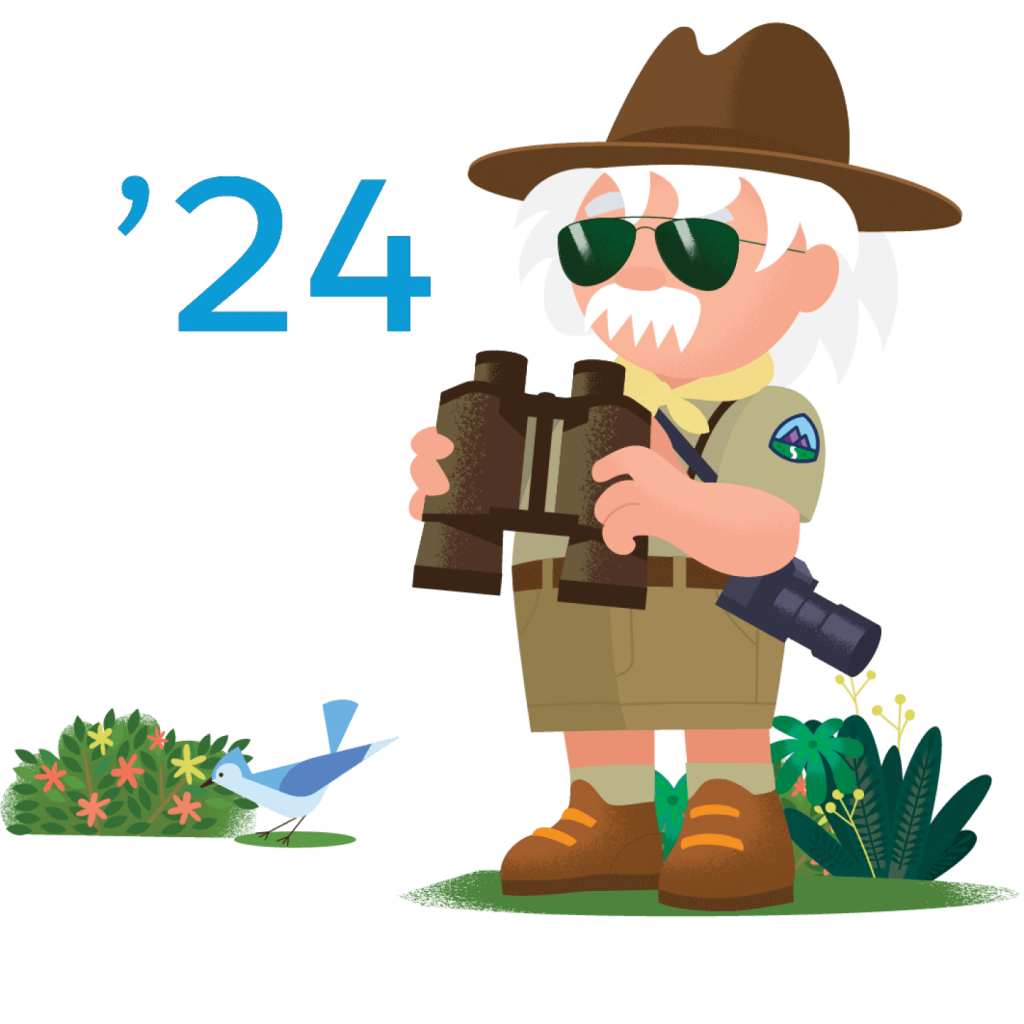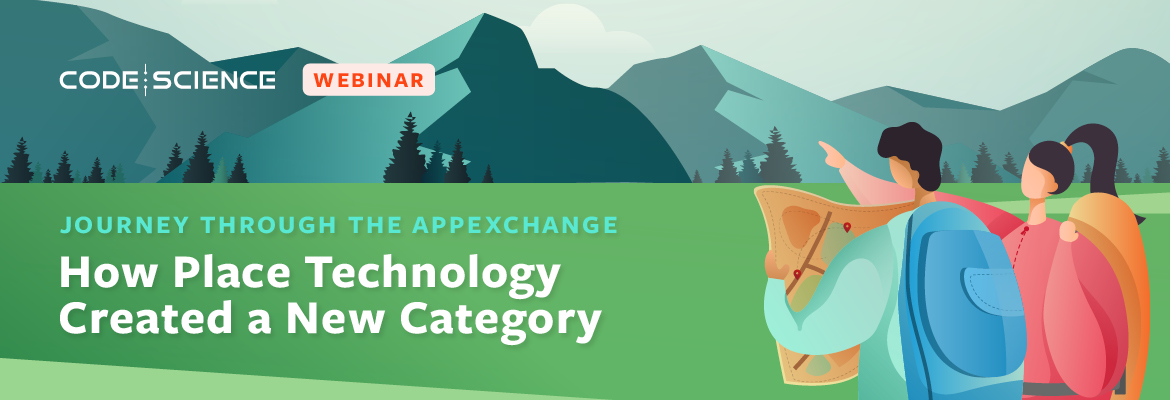
How do you create a product category out of a wide-open white space? Place Technology did just that when they launched the only strategic finance product on the Salesforce AppExchange. In the second installment of our Journey Through the AppExchange series, CodeScience Chief Revenue Officer, Sean Hogan, spoke with Brandon Metcalf, CEO & Founder of Place Technology, about their path through the Salesforce AppExchange from idea to launch and beyond.
Regardless of what revenue stage your company might be at, everyone who is creating something new on the AppExchange starts at zero. You might be two guys in a pickup truck with this little idea that you want to get off the ground. You might be the Chief Product Officer of a mega-corporation that is looking to come into the Salesforce ecosystem and invest and learn and expand. This discussion will help you figure out how to make incremental steps up the revenue cycle.
Watch the webinar now and read up on a few of the highlights from their chat below.
Starting out in Salesforce
Getting into Salesforce can be a daunting task for anyone, even someone like Brandon who has been building Salesforce-based businesses since 2009 and has seen the entire ecosystem evolve over years. As Brandon said, “Don’t try to figure out everything yourself. I had built a successful Salesforce business before but this product was totally different and I needed some other expertise to balance out what I didn’t know.”
It’s important to take advantage of every resource in order to start out strong. He also advised that if you’re just entering the ecosystem, don’t have a big expectation that you’re going to create an ISV-type product and Salesforce will just funnel you with leads all of a sudden, because that’s not going to happen.
You have to prove yourself, validate your product, get a lot of customer wins, and as soon as you start doing that and customers start loving what you do, then you’ll start to see Salesforce refer business over to you. But be sure to go into it knowing that you have to develop your own book of business and run it before Salesforce will give you a leg up.
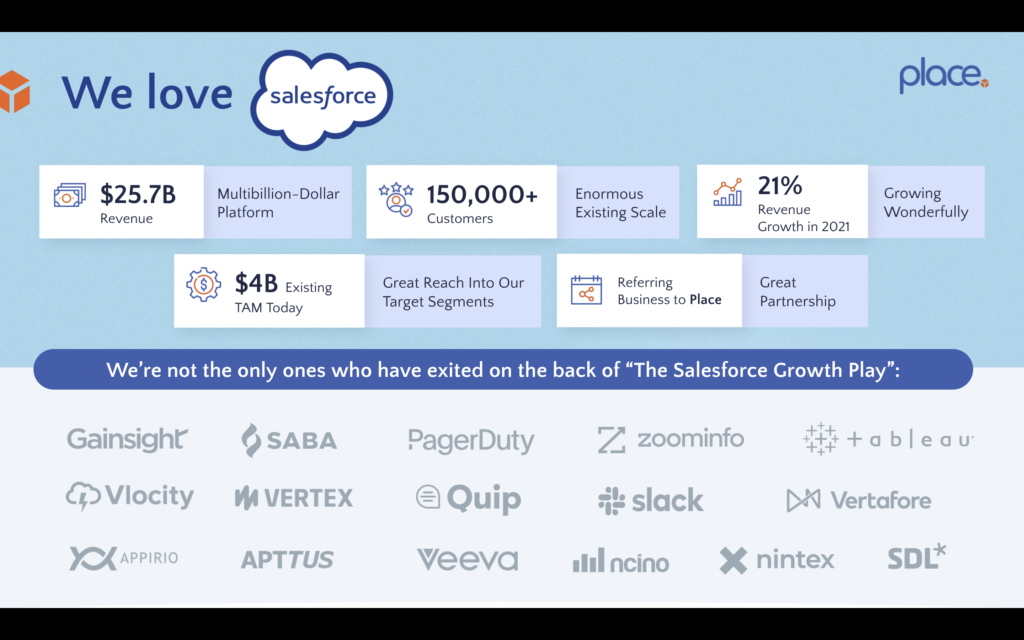
Choosing an Industry
When you’re at the beginning of your AppExchange journey, every industry is available to you. Honing in on the one that is the right fit for you is the challenge. Brandon explained, “I think selling into what you know and what you understand is game-changing. I can’t imagine if I tried to create this product and I hadn’t had nearly a decade of experience building financial models and running a SaaS company to understand the challenges the team really has.”
Solving a problem you’ve personally lived with, in that unique industry, is going to be much more achievable than trying to get into an area you don’t understand personally. Start by considering which industry you feel most comfortable with and go from there.
Sean added that “if you don’t have that vertical expertise, hire it. You might have a baseline solution that you think could go into a particular vertical or sub-vertical, but if you don’t have a domain expert, you have to bring that individual on board to help you.” These experts will help the whole team be focused on the what and the why, giving you a strong base before growing in the ecosystem. In order to bring those things to life in Salesforce, you can’t do it alone.
Back to Basics
Going too broad too quickly in your product release can result in you wasting time and resources until you eventually have to backtrack and start all over again. Brandon mentioned that it was both an advantage and a disadvantage that he had previously built a company on the Salesforce platform because he thought he knew more than he actually did. He got ahead of himself thinking that he understood the ecosystem and what it could offer his new product and customers.
Unfortunately, the people that use forward-looking finance solutions, like his product, typically aren’t in Salesforce. Brandon explained, “what we discovered is that many of them don’t necessarily love Salesforce because they’ve never really experienced it.” Place launched the product in January of 2020 marketing it as a forecasting tool to a customer base that was already resistant to what they were selling.
Assessing the Market
Brandon recalled, “January and through September, we were really focused on, what data can we get to understand why this is not working the way we thought it would work? We initially thought when we designed the product, it would be a simple self-install, you can set it up yourself and you’re off to the races…We thought the finance buyer would get it.”
But the finance buyer wasn’t interested in it because it was on Salesforce, which the buyer thought of as a tool for sales teams, not finance teams. His team quickly reassessed and changed the conversation to focus on what the outcomes of the product were versus the features of the product. It was at that point that they started to see things change for the better.
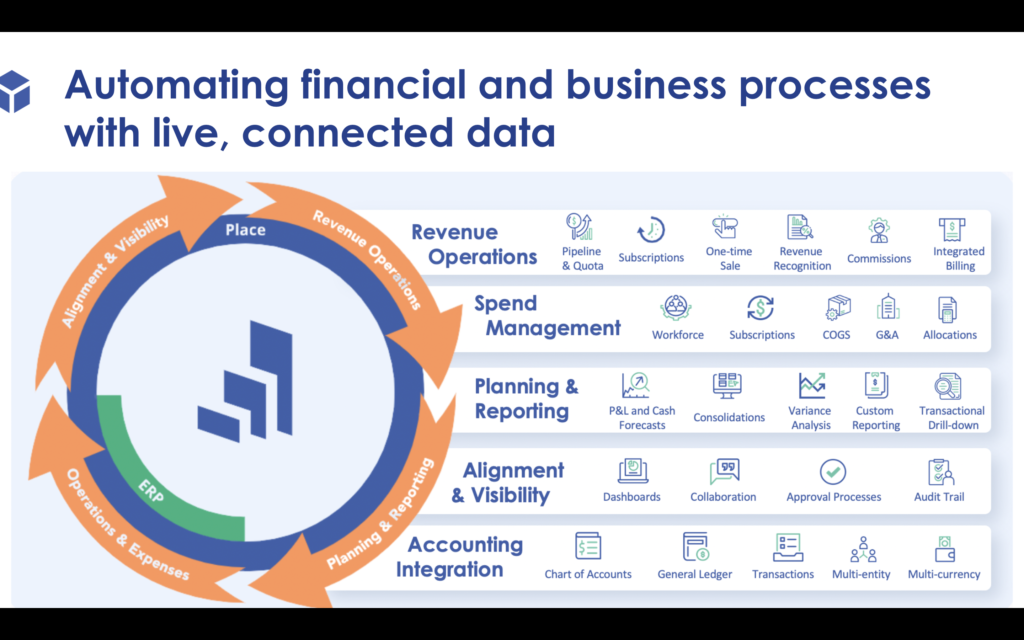
Honing in on Product Positioning
Sean pointed out that Place Technology was in market, they had an initial strategy, but eventually had to tweak both the buyer’s journey and the seller’s journey. “In that process, you found out you made a mistake. Your main user was the finance team of the solution, but the influencers, the people who wanted that connection between forecasting and supply chain was being influenced by a lot of other characters and personas that you didn’t factor into.” Working through that issue helped Brandon’s team realize that finding the right market fit is critical. Once they accomplished that, then they were abe to begin to scale and pump up the volume on marketing, sales, engineering, and the demo environment.
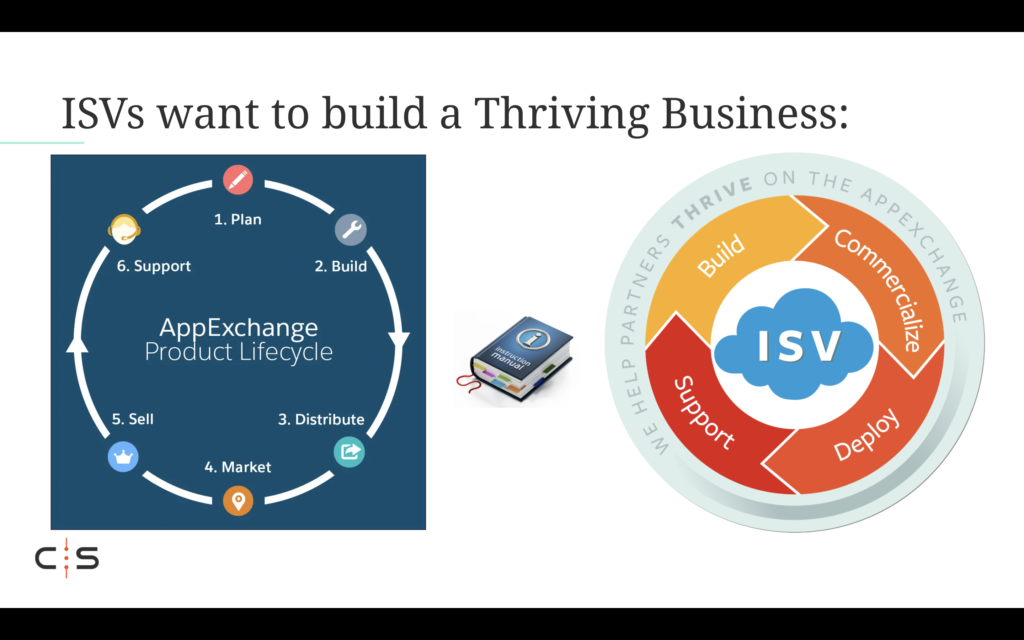
Customer Appreciation
When companies talk about customer appreciation, the follow-through may not always be there. Brandon, however, made it clear that they put the customer first in all of their goals and product launches. Last year, he asked everyone in the company to answer three simple questions:
- What does it mean for a customer to love us?
- Why is it important for a customer to love us?
- How do we get customers to love us?
The answers to these questions became the bedrock for what they focused on as a company and what they chose to dedicate resources on moving forward. As Brandon said, “Love is a weird term in business, but if we can get more customers to love us, we can continue to grow and do some pretty clever and incredible things.”
To hear more from Sean and Brandon and get a copy of the deck, register and watch the webinar here.
And don’t miss the third installment of Journey Through the AppExchange with inriver here!
Companies build their Salesforce businesses better with CodeScience. It is our mission that no ISV navigates Salesforce alone. If you’re looking for guidance on your product, help supporting your customers, or just need to ask an expert, get in touch today!

